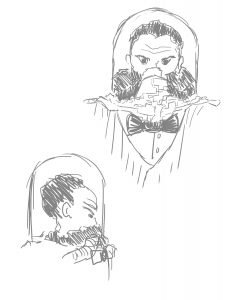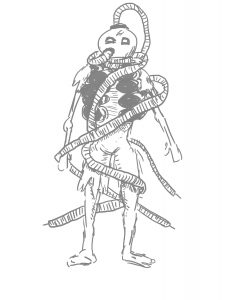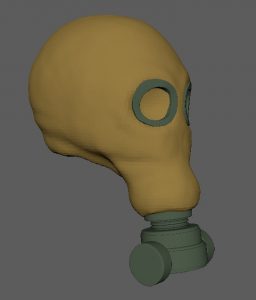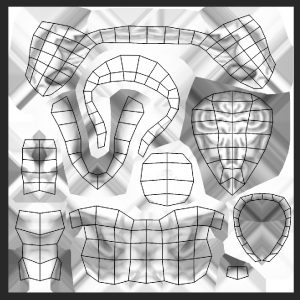Ira Glass discusses how creating large volumes of work can aid in improving one’s art. I find this to be good advice as making large quantities of work would allow you to experience a given medium in multitudes of angles showing allowing you to work out numerous kinks you may have in your workflow. Glass also discusses how artists just starting out aren’t often confident in their work due to their taste in art being greater than what they have the ability to produce. It’s good to set high standards for yourself to always stay motivated to improve.
Rob Lugo discusses the social themes of his art and how he uses his chosen medium of pottery to communicate them. This is beneficial as it shows the importance of symbols and materials used and the role these things can play in a given piece of art. He also talks about the power of art and how it can be used to help people, which is another important message for artists who want their work to make a difference. Lugo also talks about the blessing that is the opportunity to fail. Artists should not be afraid to experiment and learn from their process to improve their work and themselves.
Krista Tippet discusses the notion that vulnerability that can be an asset to one’s character and their work. Vulnerability can nurture one’s empathy for others and their artwork. It can also allow us to be at peace with our imperfections and make them into our strengths. While these are broad concepts, they are beneficial in keeping the right mindset while attempting to improve your artwork.
John Cleese discusses the process of creativity and how to stay in the creative mindset. One the points he makes is that often when starting over a project that has been previously worked on, the new product is of greater quality. This is likely because the brain continues to work subconsciously. Cleese also highlights that it is dangerous for the brain to be interrupted while in a flow of creativity. This is why it is important to make sure when one is working on something creative, that they do so in a place with little distractions. It is also important to not be too in love with the state your work is currently in. Be willing to adapt and lose control over your work.
Susan K Grant has an interesting source of inspiration, being that she takes lines of text and attempts to use these as a framework for images. From her perspective art should come from a place that doesn’t exist in the real world. In this way, the subconscious is being used as your reference. I think this is an interesting way to work from a conceptual standpoint but isn’t all that realistic if making art for a production such as a film or game. Reference images are highly beneficial in figuring out how something works when basing a piece of art work on it.
David Whyte discusses philosophical quandaries that are very broad, but can help attempting to stay in the right mindset for developing ideas. One point he makes is to ask beautiful questions in situations that are not beautiful. I interpret this as to never stop learning from your mistakes even when facing difficult challenges while working on a project. Whyte also mention to let the world shape you. This reminds me to accept the things you cannot change and don’t let them be a hindrance to your workflow.
Chitra Ganesh has an interesting process of combining imagery from history and combining it futuristic imagery. This reminds me of a quote about originality that goes something like, “originality is combining things in a way you didn’t expect.” I think this is a reasonable way to think about generating ideas and Ganesh seems to use this process to great affect.
Miwa Matreyek has very interesting work. The idea of using a premade video then having a life performance on top of it using shadow is quite unique. It also makes a medium that is usually premade into something that is more of a performance that can only be experienced situationally.
Maggie Talyor makes interesting pieces of digital art that is enhanced by traditional fine arts principals. One things that was discussed was how they use light in their pieces to direct the eye of the viewer. This sense of theatrical lighting is a principal that has been a method used by many artists both digital and traditional alike.
William Kentridge discussed the importance of staging a subject when being captured on film. Kentridge emphasizes the importance of considering the events that occur before and after a given shot. This is achieved in part by striking a balance of being fluid and flexible with shots while also having a planned concept and following through with it.

































